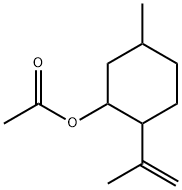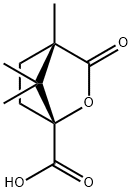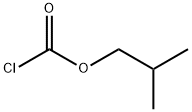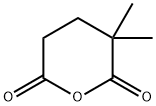Isobutyl formate
- CAS NO.:542-55-2
- Empirical Formula: C5H10O2
- Molecular Weight: 102.13
- MDL number: MFCD00003293
- EINECS: 208-818-1
- SAFETY DATA SHEET (SDS)
- Update Date: 2025-01-27 09:38:02

What is Isobutyl formate?
Description
Isobutyl formate has a fruity, ether-like odor and a sweet taste reminiscent of rum. Isobutyl formate may be prepared from isobutyl alcohol and carbon monoxide in the presence of sodium isobutylate at 110°C and 400 atm.
Chemical properties
CLEAR COLOURLESS TO LIGHT YELLOW LIQUID
Chemical properties
Isobutyl formate has a fruity, ether-like odor and a sweet taste reminiscent of rum.
Occurrence
Reported found in pineapple, apple, vinegar, wheat bread, beer, cognac and rum.
The Uses of Isobutyl formate
Isobutyl Formate is a synthetic flavoring agent that is a stable, colorless liquid of fruity odor. storage should be in glass or tin containers. it is used in fruit flavors such as pear, raspberry, and other berry flavors with applications in beverages, ice cream, candy, and baked goods at 2–18 ppm.
Preparation
From isobutyl alcohol and carbon monoxide in the presence of sodium isobutylate at 110°C and 400 atm
Definition
ChEBI: 2-Methylpropyl formate is a carboxylic ester.
Taste threshold values
Taste characteristics at 10 ppm: slightly sweet, fresh, gives lift, fruity
General Description
A colorless liquid. Less dense than water. Flash point 60°F. Vapors heavier than air. Vapors may be narcotic and irritating in high concentrations. Used as a solvent and to make perfumes.
Air & Water Reactions
Highly flammable. Soluble in water.
Reactivity Profile
Isobutyl formate is an ester. Esters react with acids to liberate heat along with alcohols and acids. Strong oxidizing acids may cause a vigorous reaction that is sufficiently exothermic to ignite the reaction products. Heat is also generated by the interaction of esters with caustic solutions. Flammable hydrogen is generated by mixing esters with alkali metals and hydrides.
Health Hazard
May cause toxic effects if inhaled or absorbed through skin. Inhalation or contact with material may irritate or burn skin and eyes. Fire will produce irritating, corrosive and/or toxic gases. Vapors may cause dizziness or suffocation. Runoff from fire control or dilution water may cause pollution.
Fire Hazard
HIGHLY FLAMMABLE: Will be easily ignited by heat, sparks or flames. Vapors may form explosive mixtures with air. Vapors may travel to source of ignition and flash back. Most vapors are heavier than air. They will spread along ground and collect in low or confined areas (sewers, basements, tanks). Vapor explosion hazard indoors, outdoors or in sewers. Runoff to sewer may create fire or explosion hazard. Containers may explode when heated. Many liquids are lighter than water.
Biochem/physiol Actions
Taste at 10 ppm
Synthesis
Iso-BUTYL FORMATE is synthesized from iso-Butanol by direct esterification with formic acid under azeotropic conditions, using e. g. para-Tolylsulfonic acid catalyst.
Purification Methods
Wash the formate with saturated aqueous NaHCO3, in the presence of saturated NaCl solution until no further reaction occurs, then with saturated aqueous NaCl, dry (MgSO4) and fractionally distil it. [Beilstein 2 H 21, 2 I 18, 2 II 30, 2 III 41, 2 IV 29.]
Properties of Isobutyl formate
| Melting point: | -96 °C |
| Boiling point: | 98.4 °C (lit.) |
| Density | 0.885 g/mL at 25 °C (lit.) |
| vapor density | 3.52 (vs air) |
| refractive index | n |
| FEMA | 2197 | ISOBUTYL FORMATE |
| Flash point: | 50 °F |
| storage temp. | Flammables area |
| Water Solubility | Soluble in water |
| form | clear liquid |
| color | Colorless to Almost colorless |
| Odor | at 10.00 % in dipropylene glycol. sweet chemical ether fruity |
| Odor Threshold | 0.49ppm |
| explosive limit | 8.9% |
| Merck | 14,5143 |
| JECFA Number | 124 |
| Dielectric constant | 6.5(19℃) |
| CAS DataBase Reference | 542-55-2(CAS DataBase Reference) |
| EPA Substance Registry System | Formic acid, 2-methylpropyl ester (542-55-2) |
Safety information for Isobutyl formate
| Signal word | Danger |
| Pictogram(s) |
 Flame Flammables GHS02  Exclamation Mark Irritant GHS07 |
| GHS Hazard Statements |
H225:Flammable liquids H319:Serious eye damage/eye irritation H335:Specific target organ toxicity, single exposure;Respiratory tract irritation |
| Precautionary Statement Codes |
P210:Keep away from heat/sparks/open flames/hot surfaces. — No smoking. P305+P351+P338:IF IN EYES: Rinse cautiously with water for several minutes. Remove contact lenses, if present and easy to do. Continuerinsing. |
Computed Descriptors for Isobutyl formate
| InChIKey | AVMSWPWPYJVYKY-UHFFFAOYSA-N |
New Products
3-Iodophenylacetic acid 3-Pyridineacetonitrile, α-hydroxy- 2-Propanamine, 1-chloro-, hydrochloride (9CI) 3-(hexyloxy)-4-(pyridin-3-yl)-1,2,5-thiadiazole 2-Hexyn-1-ol Dibenzo-18-crown-6 Nickel(II) perchlorate hexahydrate, 98% 4-Bromophenylacetonitrile, 95% 3-Bromo-4-fluoroaniline, 97% Sodium tetraborate decahydrate, 98% Palladium(II) acetate, trimer, Pd 99% 4-Bromo-2-chlorotoluene, 97% N N Dimethylformamide Dimethyl Acetal (Dmf Dma) 2,3-Dichloro Benzoyl Cyanide [Side Chain] Bis(2-Chloroethyl) Amine Hydrochloride L-Glutamic Acid Diethyl Ester Hydrochloride 5-(Difluoromethoxy)-2-Mercaptobenzimidazole 1-Ethyl-3-(3-Dimethylaminopropyl)-Carbodiimide Hydrochloride [EDC Hcl] 1,4-Napthoquinone Bromoiodomethane Sodium Bicarbonate Methylene Dichloride (MDC) Ethyl Acetate Indole-3-Carbinol (I3C)Related products of tetrahydrofuran








You may like
-
 Isobutyl formate 542-55-2 98%View Details
Isobutyl formate 542-55-2 98%View Details
542-55-2 -
 Isobutyl formate CAS 542-55-2View Details
Isobutyl formate CAS 542-55-2View Details
542-55-2 -
 Isobutyl Formate CAS 542-55-2View Details
Isobutyl Formate CAS 542-55-2View Details
542-55-2 -
 17604-74-9 3-Pyridineacetonitrile, α-hydroxy- 98+View Details
17604-74-9 3-Pyridineacetonitrile, α-hydroxy- 98+View Details
17604-74-9 -
 Cyclohexane, (2-propynyloxy)- 67967-07-1 98+View Details
Cyclohexane, (2-propynyloxy)- 67967-07-1 98+View Details
67967-07-1 -
 2-Propanamine, 1-chloro-, hydrochloride (9CI) 98+View Details
2-Propanamine, 1-chloro-, hydrochloride (9CI) 98+View Details
5968-21-8 -
 3-Iodophenylacetic acid 1878-69-9 98+View Details
3-Iodophenylacetic acid 1878-69-9 98+View Details
1878-69-9 -
 132945-75-6 (S)-1-Boc-3-methanesulfonyloxy-pyrrolidine 98+View Details
132945-75-6 (S)-1-Boc-3-methanesulfonyloxy-pyrrolidine 98+View Details
132945-75-6
